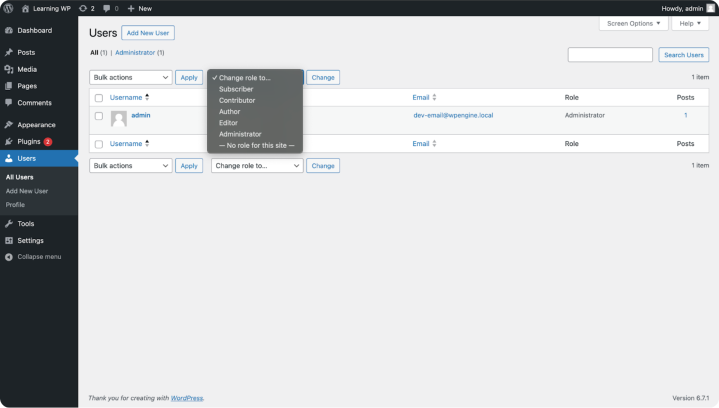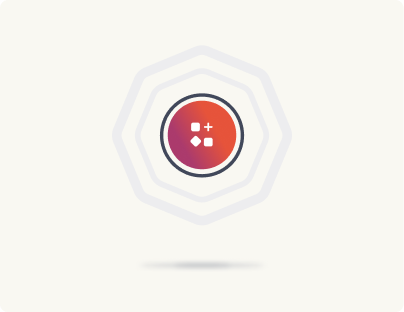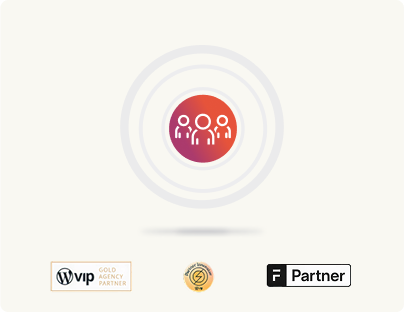Contentful vs headless WordPress: End-user experience
No CMS decision is just about the backend. It’s about how the system works for the people using it, content teams trying to ship campaigns, IT teams keeping systems stable, and developers building the frontend experiences.
So let’s look at how Contentful and hybrid/headless WordPress support each of these stakeholders because your CMS is only as good as how your teams experience it every day.
Content and marketing teams: Balancing creativity with agility
In a headless-first CMS, content and marketing teams are heavily reliant on technical teams to structure, present, and deliver content across channels. While this setup enables true omnichannel delivery, it often introduces delays for non-technical users. Tools for content creation are typically API-first and aren’t content creator-friendly. Content writing-friendly tools are, in fact, one requirement for a CMS to be an “agile” CMS. While headless-first content creation experiences work for brands with well-defined workflows and predefined multichannel strategies, for dynamic marketing environments, it can feel rigid without extensive planning, leaving writers quite dependent.
A hybrid headless CMS like WordPress offers the best of both worlds. Content teams can work within an intuitive, user-friendly interface for creating and managing content, while simultaneously leveraging headless capabilities for omnichannel delivery. The flexibility of a hybrid model empowers marketing teams to execute campaigns faster.
It’s not just about usability, it’s about velocity. Marketing teams can ship landing pages, campaign content, or region-specific updates without waiting on developer cycles.
Both platforms offer user role management, but WordPress leans toward accessibility: editors, authors, admins, and custom roles can be configured with just a few clicks or extended using plugins.

Contentful offers fine-grained control, but it’s often tied to space-level permissions and API-specific logic.

IT teams: Simplifying maintenance with scalable solutions
For IT teams, headless-first CMSs offer clean architectural separation. Contentful acts purely as a content hub, no frontend, no server-side rendering, just APIs. This can simplify compliance, security, and scaling.
But it also shifts the operational load:
- Multiple frontends mean multiple systems to monitor and patch
- Integration layers must be tracked, tested, and updated across environments
- API versioning adds an ongoing layer of risk
In hybrid WordPress, IT gets to operate on familiar ground but with added flexibility. The platform supports traditional rendering (for quick wins), headless delivery (for performance or composability), and a range of built-in tools for managing users, backups, and updates.
It’s the difference between owning infrastructure and orchestrating it. With WordPress, IT can still enforce policy, but without being a constant bottleneck.
And when paired with structured approaches (like this WordPress multisite guide or operational frameworks we’ve used with enterprise teams), WordPress can scale with surprising ease, even across dozens of digital properties.
Developer teams: Navigating flexibility and freedom
Developers often thrive in a headless-first environment due to its flexibility. By decoupling the frontend from the backend, they can use modern frameworks like React, Vue, or Angular to build highly customized and performant user experiences.
APIs give the freedom to integrate third-party services and create tailored solutions for unique business needs.
However, this freedom comes with challenges. A headless-first CMS demands a high level of expertise to manage APIs, handle frontend complexity, and maintain consistent performance across platforms. For smaller teams or organizations with limited resources, this can become a bottleneck.
Hybrid headless CMSs, on the other hand, provide developers with a more versatile toolkit. With WordPress, developers can choose to work within the traditional framework or decouple the frontend for a headless setup, giving them the flexibility to adapt their approach based on project requirements.
This flexibility translates to greater agility, as developers can quickly iterate between traditional and headless approaches.
Additionally, WordPress’s extensive documentation and plugin ecosystem reduces the overhead of building from scratch, allowing teams to focus on innovation rather than reinventing the wheel. This can be a huge challenge with a headless CMS like Contentful (as most of them don’t have a mature ecosystem like WordPress).
While headless-first CMSs cater to developers seeking full control, hybrid headless CMSs strike a balance by offering flexibility without overcomplicating workflows, fostering a more agile development environment.
The bottom line on end-user experience
Contentful is developer-first, API-centric, and built for scale. For organizations with mature engineering workflows and predefined content delivery models, it’s a strong contender.
But for enterprises that want to:
- Move faster without sacrificing structure
- Empower content teams without constant dev support
- Scale across channels without reinventing systems
…hybrid headless WordPress offers a more human-centric CMS experience.
It supports the real-world rhythms of multi-team collaboration, without forcing everyone into the same rigid workflow. That’s what makes it agile and not just technically, but culturally.







